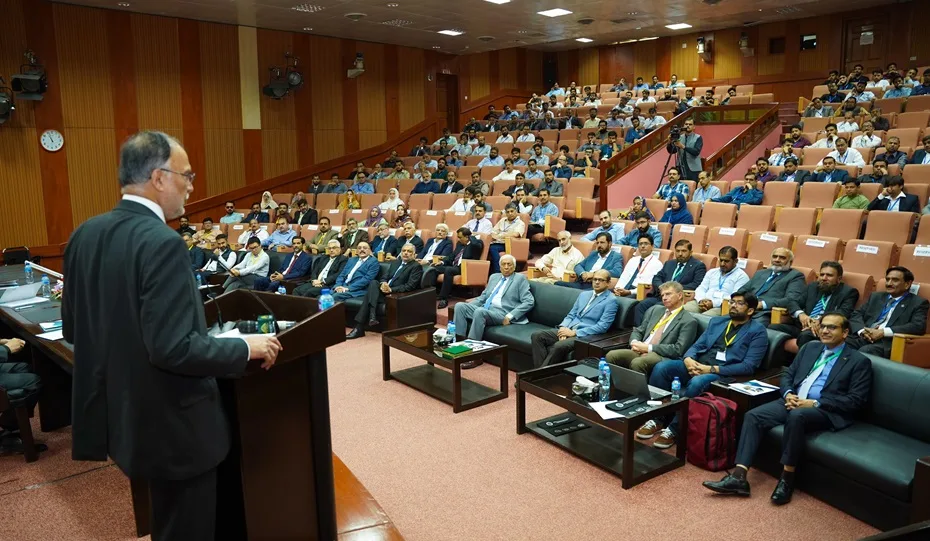ISLAMABAD, (TDI): The National Center for Physics (NCP) at Quaid-i-Azam University has launched the First International Conference on 3D Printing and Vacuum Technology, running from October 23 to October 25, 2024.
The event brings together over 50 leading researchers and scientists from around the globe to explore the latest advancements in these transformative fields.
The three-day conference was inaugurated by Planning Minister Professor Ahsan Iqbal.
In his address to the conference, Ahsan Iqbal spoke about the immense potential of 3D printing and vacuum technology, emphasizing the crucial role of science and technology in propelling national development.
He urged scientists, researchers, and innovators to strive to position Pakistan as a leader in technological progress.
He described these innovations not merely as technological milestones but as catalysts for reshaping industries, redefining economies, and revolutionizing daily life.
By facilitating precise manufacturing in controlled environments, these technologies offer solutions across healthcare, aerospace, construction, and energy sectors.
“We are at the intersection of two remarkable innovations—3D printing and vacuum technology—that have transformed production, manufacturing, and research worldwide.
This conference signifies the beginning of Pakistan’s formal journey into the Fourth Industrial Revolution,” Minister Iqbal stated.
Also Read: Pakistan Minister Discusses Power Sector with Turkiye Counterpart
Highlighting global advancements, he cited groundbreaking progress in healthcare through bio-printing, with countries like the USA and Germany leading in the creation of living tissues and custom implants.
He also noted that NASA utilizes 3D printing to manufacture rocket parts, significantly reducing costs and unlocking new possibilities for space exploration.
Minister Iqbal expressed Pakistan’s aspiration to enhance its space capabilities by collaborating with agencies like SUPARCO to leverage similar technologies.
Additionally, he pointed to Dubai’s initiative to utilize 3D printing for 25% of its new buildings by 2030 and China’s rapid construction of entire neighborhoods with this technology, showcasing its potential in affordable housing.
Also Read: Pakistan Updates IMF on Reforms in Taxation, Energy
The Minister outlined the government’s vision to harness these technologies as part of the Five Es Development Framework, aiming to transform Pakistan into a trillion-dollar economy by 2035.
He elaborated on how 3D printing can boost exports, drive digital transformation through E-Pakistan initiatives, promote environmentally sustainable manufacturing, enhance energy efficiency, and empower marginalized communities with accessible technological solutions.

Reiterating the government’s commitment to fostering a supportive ecosystem, Minister Iqbal highlighted initiatives like the Pakistan Innovation Fund and Centers of Excellence to stimulate innovation.
He emphasized the necessity for collaboration among the government, private sector, academia, and research institutions to equip the youth with the skills required to lead in these emerging fields through universities, vocational institutes, and training centers.
Stressing the importance of a stable political environment and policy continuity, he noted that countries such as Singapore, India, and Malaysia have successfully integrated these technologies through consistent governance.
He reflected on the progress made under Vision 2025 from 2013 to 2018, which faced setbacks due to policy reversals in subsequent years.
“The success stories of other nations illustrate that long-term stability is essential for sustained economic growth. Pakistan must maintain policy consistency to avoid setbacks and ensure a steady path toward development,” he asserted.
The conference marks a significant step for Pakistan as it seeks to embrace and advance in the fields of 3D printing and vacuum technology, setting the stage for future innovations and collaborations.



